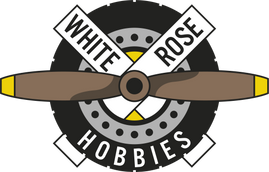
ScaleTrains Operator 81340 HO Scale Bethgon Coal Loads
Offset 2 Pack
Empties in, loads out. Moving coal has always been big business for railroads. Now, you can move black diamonds on your model railroad with our offset or symmetrical coal loads for the Operator and Rivet Counter series Bethgon Coal Gondola. Two (2) loads are included in each package.
Since the development of the automobile, railroads and automakers have worked together to develop better and more efficient methods for transporting new vehicles to market. Shipping via rail offers automakers a fast, cost-effective method of moving new autos from manufacturing centers to distribution centers, or in the early days, to dealers themselves.
Double-door boxcars were amongst the first designs to haul automobiles. The larger opening of the double-doors allowed cars to be driven aboard. As time passed, flatcars equipped with multi-level open-air racks were developed. Since automobiles are relatively light, long flats of up to 89’ in length were adapted to use two (bi-level) or three (tri-level) deck racks. Simply known as “autoracks”, these unique cars can carry a dozen or more vehicles.
By the late 1960s, new vehicles shipped via racks would prove too tempting for vandals who used the windows on new vehicles for target practice. Thieves would also take a toll by breaking into new automobiles to steal high-value components like stereos and hubcaps. Even train-hopping transients would prove to be a problem since riding in a new automobile was much more comfortable than a dirty boxcar or gondola.
To shield new vehicles from wayward projectiles, railroads and car builders added metal screens or fiberglass panels to the sides of the autoracks. While the side screens or panels worked to protect window glass, the ends of the autoracks remained open which allowed easy access for thieves or transients to climb aboard and damage new vehicles.
The 1970s would see the development of fully-enclosed autoracks to protect the valuable cargo inside. The sides were completely protected with perforated galvanized-steel panels. The top of the car was enclosed with a galvanized steel roof which protected cars on the top level. Finally, the ends were equipped with a large pair of sliding or folding doors to keep unwanted passengers out.
With many racks built in the 60s and 70s nearing the end of their operational lives, Greenbrier/Gunderson introduced a new design in 2013 to provide the ultimate in protection for vehicles as well as operational flexibility. The new design, dubbed “Multi-Max”, introduced design elements to help meet the challenges faced by railroads and shippers in the 21st century.
While the basic enclosed autorack protected new autos from projectiles, a new form of vandalism became prevalent in the late 1990s, graffiti. Paint spray would pass through the perforations in the side panels and onto the new automobiles ruining their finish. The perforations are a necessity because hey allow enough light for workers to see while loading or unloading the cars as well as to allow ventilation of automobile exhaust. Multi-Max features smaller, fewer, and more widely spaced perforations in its side panels, reducing the chance of paint spray passing through.
In another novel design feature, the cars feature the ability to adjust the number of decks. “Bi-level” autoracks are intended to carry taller vehicles, such as SUVs or vans, while “tri-level” autoracks, having an additional deck, handle shorter-in-height standard or compact autos in the same given space. Traditionally, railroads would order bi- and/or tri-level racks based upon anticipated traffic from manufacturing plants. If a plant decided to shift production from one vehicle type to another, such as from automobiles, to SUVs, it could result in a surplus of a car type unsuitable for the new traffic. Multi-Max features the ability for railroad car shops to change the car configuration from bi-level to tri-level, or vice-versa, as traffic patterns dictate.
With several thousand auto carriers built for nearly all North American Class One railroads, the Gunderson Multi-Max has proven to be an extremely popular design. In a welcome departure from recent practice, many of these cars wear colorful schemes featuring large logos which helps them stand out in a train alongside older autorack designs. With the numbers built to date and its popularity with shippers, the Greenbrier/Gunderson Multi-Max is poised to become the premier autorack design of the 2000s.

